We use cookies to help better serve your experience. Accept Cookies
Salon
Watch the Reading The Pictures Salon: The Visual Framing of the Migrant Crisis
Photos of the migrant crisis have dominated the media space over the past year.
By Phil BattaWhat can we learn from the way traditional and social media, primarily in the west, has depicted the crisis in terms of context; scale and scope; demographics (including gender, race and nationality); geopolitics; aesthetics; empathy and sensitivity?
Watch the replay of our salon: “The Great Exodus: The Visual Framing of the Migrant Crisis.” The discussion, led by Reading the Pictures moderator and visual scholar, Cara Finnegan, was held Sunday, January 10th, 2016 on Google HangOut with live audience chat. Our distinguished panelists are listed below.
Be sure to catch our next salon live to also follow and participate in the audience chat.
Also stay tuned for highlight clips from this program which will be posted in the next few weeks.
Use this url to share the post: http://bit.ly/MigrantsInMedia
Reading The Pictures Salon is an on-line, real-time discussion between photojournalists, visual academics and other visual or subject experts. Each salon examines a set of images relevant to the visual stories of the day often focusing on how the media and social media has framed the event. The photo edit is the key element and driver of each Salon discussion and great care is taken to create a group of photos that captures the depth and breadth of media representation.
(photo: Marko Djurica/Reuters caption: A migrant carrying a baby is stopped by Hungarian police officers he tries to escape on a field nearby A collection point in the village of Roszke, Hungary, September 8, 2015.)
Highlight Clips
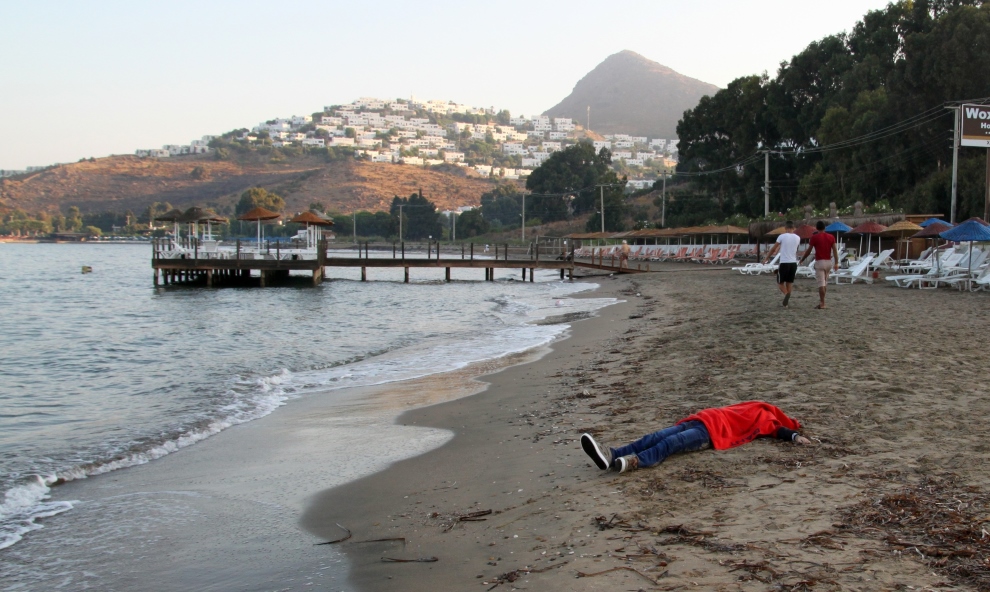
The Migrant Crisis - A Body on the Beach
The body of a migrant is washed ashore on a beach after a boat carrying 12 migrants sank off the coast of Mugla’s Bodrum district, Turkey on September 02, 2015. The photo, distributed by Getty Images/Andalou Agency, was published that same day as a more widely known image of the body of a boy, Alan Kurdi. Kurdi washed ashore on the same beach. In this highlight clip, moderator Cara Finnegan and panelists Glenn Ruga, Michelle Bogre and Shani Orgad discuss why this image may have been less widely distributed and how it operates as a commentary on the migrant crisis.
Watch NowThe body of a migrant is washed ashore on a beach after a boat carrying 12 migrants sank off the coast of Mugla’s Bodrum district, Turkey on September 02, 2015. Getty Images/Andalou Agency
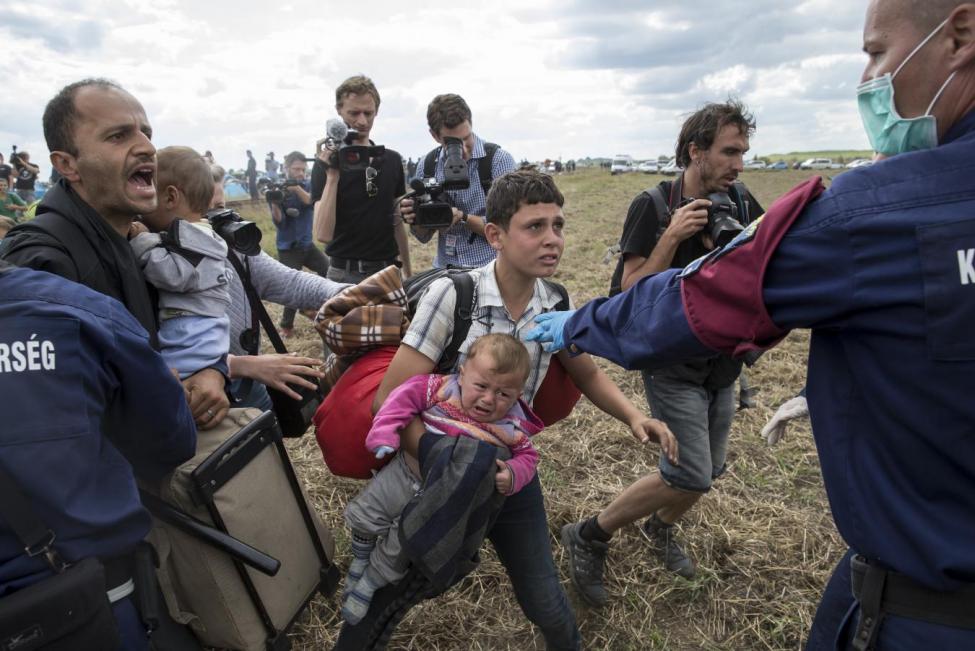
The Police and the Media on a Field in Hungary
In this highlight clip, moderator Cara Finnegan, Glenn Ruga, Shani Orgad, Anne Demo and Michelle Bogre discuss the role of the media and the police as they encircle a young migrant carrying a younger child as he struggles to cross a field in Hungary. This image addresses the responsibilities and conflicts surrounding those who administrate, control and record this human crisis.
Watch NowA migrant carrying a baby is stopped by Hungarian police officers as he tries to escape on a field nearby a collection point in the village of Roszke, Hungary, September 8, 2015. REUTERS/Marko Djurica
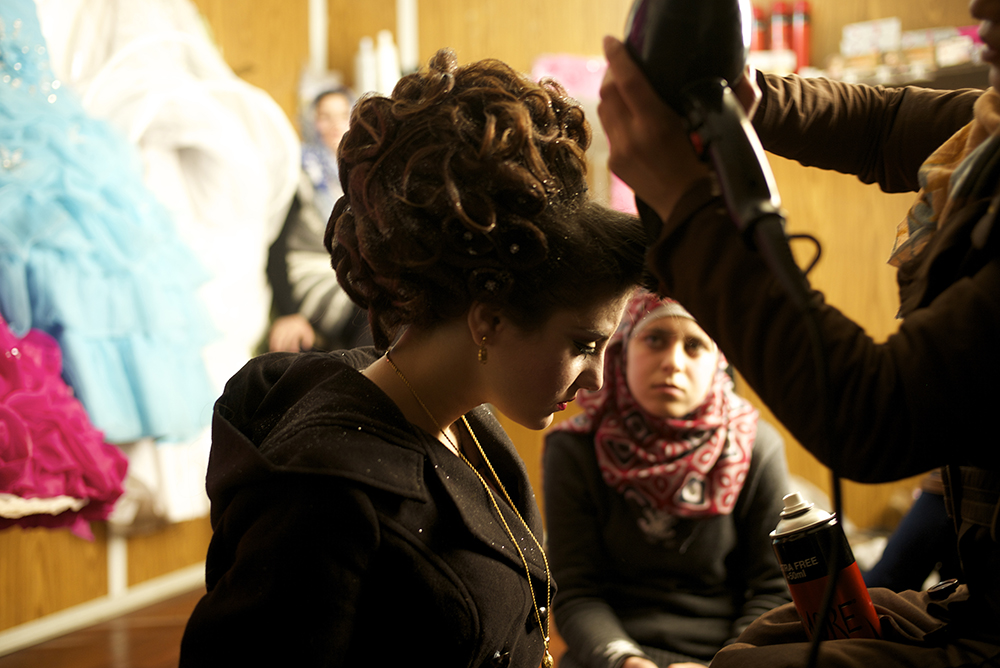
Migrant Crisis: In the Zaatari Refugee Camp, Preparing to be Wed
In this highlight clip, moderator Cara Finnegan and panelists Alixandra Fazzina, Anne Demo, and Shani Orgad discuss an uncommonly intimate photograph that highlights the difference between photojournalism and documentary photography.
Watch NowZAATARI, JORDAN: JANUARY 2014 Under a dryer powered by a generator, eighteen year old Syrian bride Juzlan has the finishes touches applied to her elaborate hairstyle in the salon where she has spent the entire morning preparing to be wed as a refugee. Marrying the boy she fell in love with at college two years ago, Juzlan and her fiance made the decision to go ahead with the ceremony fearing that it may be years before they can return home. Venturing out into the muddy streets of Zaatari Camp, Juzlan takes deep breaths. Her mother Jamalat cries, âMy eldest son is in Syria and he doesn’t even know his sister is getting married today. Last night one of our relatives was killed and one was injured. Syria is on our minds all the time. photo: Alixandra Fazzina/NOOR
The Full Edit
Take a closer look at some of the images from our larger photo edit.


ZAATARI, JORDAN: JANUARY 2014 Under a dryer powered by a generator, eighteen year old Syrian bride Juzlan has the finishes touches applied to her elaborate hairstyle in the salon where she has spent the entire morning preparing to be wed as a refugee. Marrying the boy she fell in love with at college two years ago, Juzlan and her fiance made the decision to go ahead with the ceremony fearing that it may be years before they can return home. Venturing out into the muddy streets of Zaatari Camp, Juzlan takes deep breaths. Her mother Jamalat cries, âMy eldest son is in Syria and he doesn’t even know his sister is getting married today. Last night one of our relatives was killed and one was injured. Syria is on our minds all the time. photo: Alixandra Fazzina/NOOR
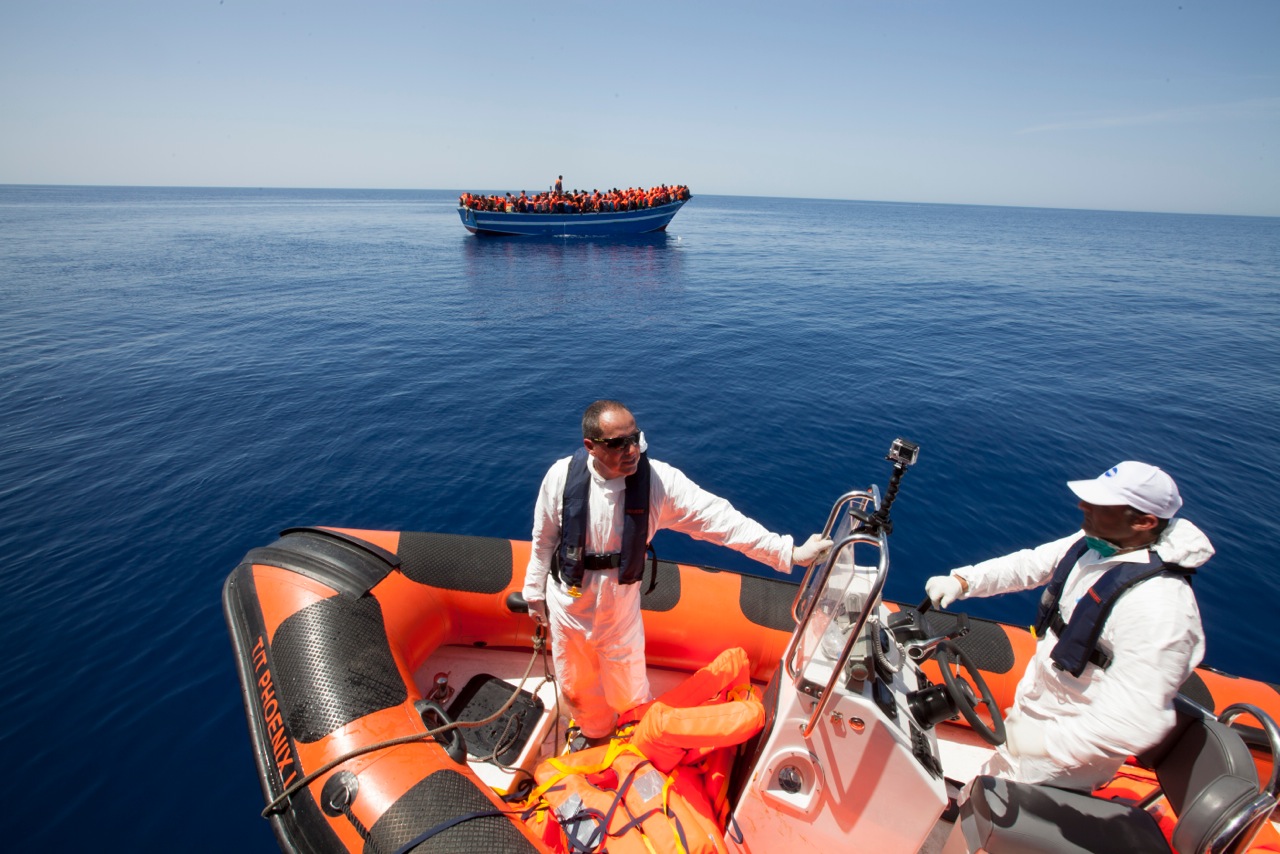

Migrant Offshore Aid Station’s ( MOAS) SAR team (search and rescue) Jon and Mimmo wait for more lifejackets to be transferred from the MOAS mothership, The Phoenix, to their RHIB (ridged hulled inflatable boat) that they will distribute to the 369 migrants on a sinking wooden fishing boat. May 3, 2015. photo: Jason Florio


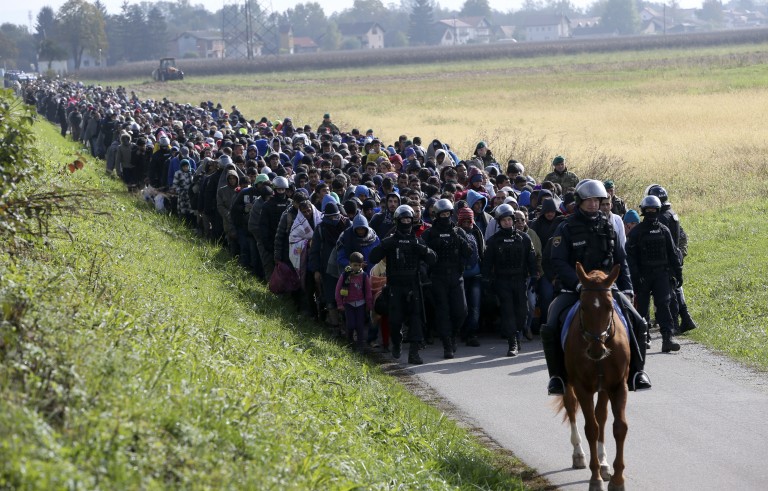

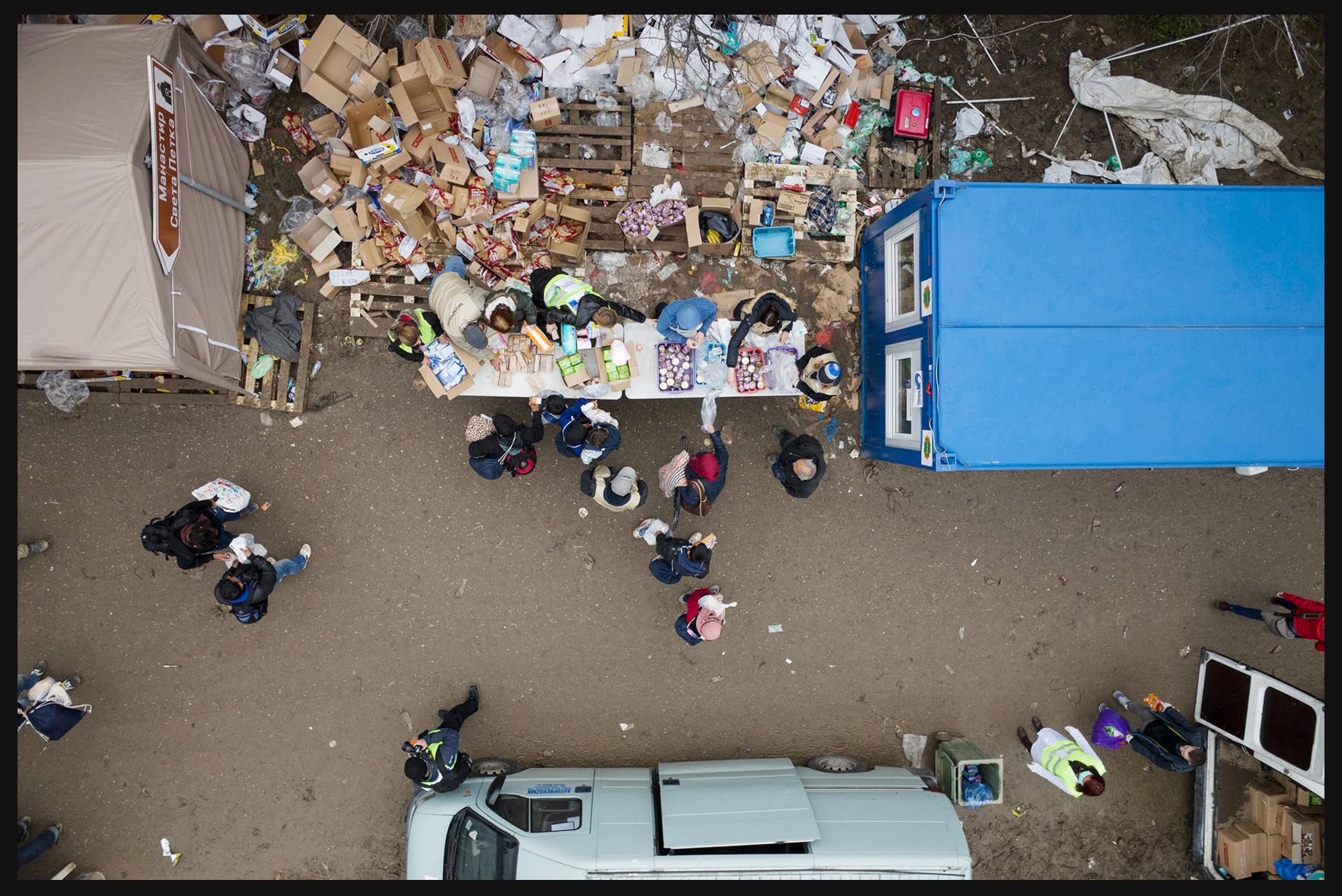

After arriving by bus, migrants lined up for food at a temporary camp on the border between Serbia and Croatia. After leaving the shelter, they would cross into Croatia and board buses and trains to reach Austria. Published December 2015. photo: Rocco Rorandelli
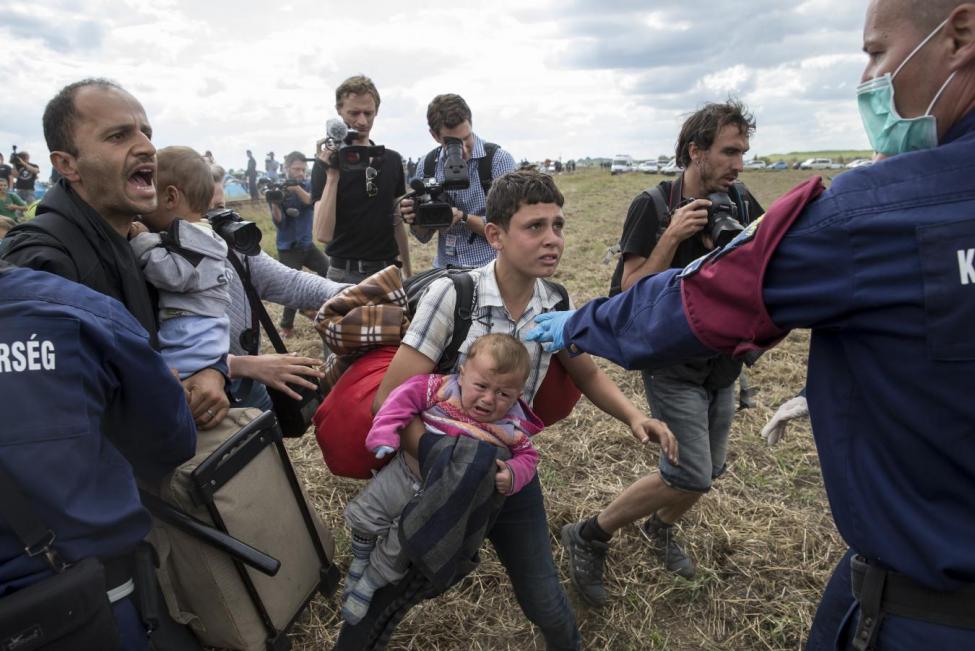

Tuesday, September 08, 2015 A migrant carrying a baby is stopped by Hungarian police officers as he tries to escape on a field nearby a collection point in the village of Roszke, Hungary, September 8, 2015. photo: Marko Djurica/Reuters
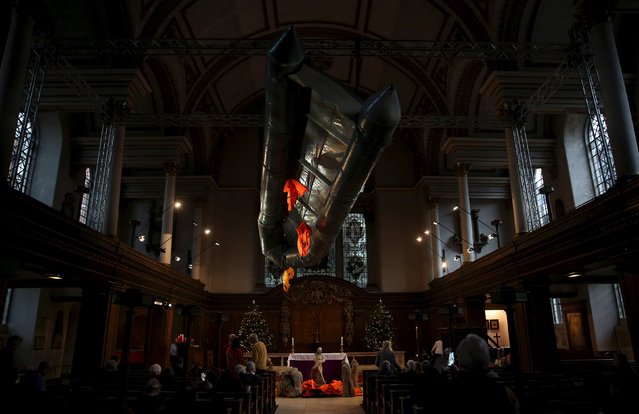

Artist Arabella Dorman’s installation “Flight” is presented at the nave of St James’s Church in London, Britain December 20, 2015. According to the artist, the work was created from a salvaged dingy and lifejackets from refugees in Lesbos, Greece. photo: Neil Hall/Reuters
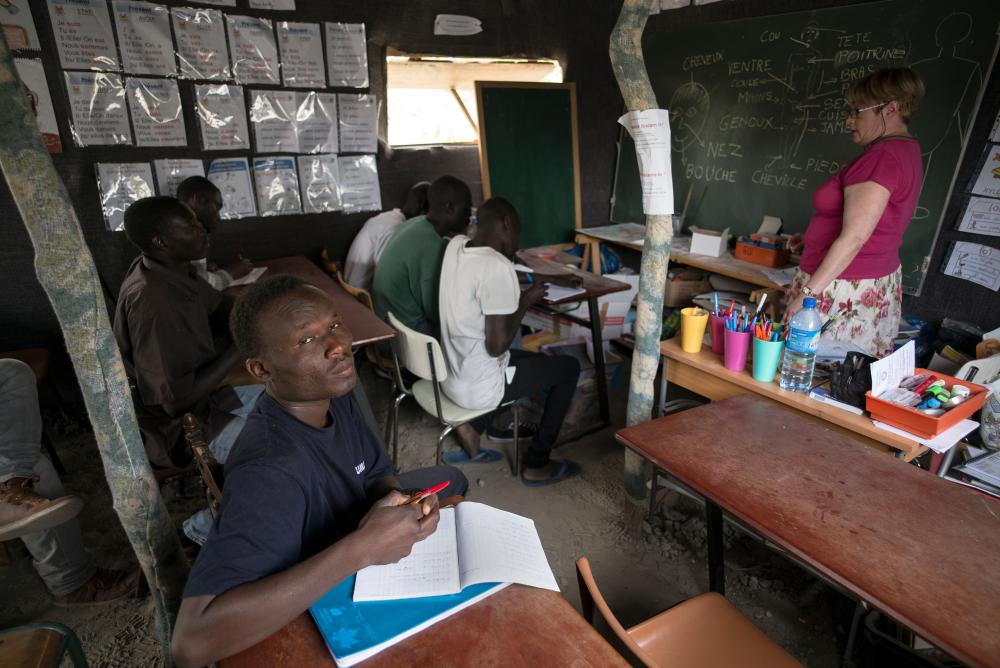

Kamal Yahya from Sudan at a school where migrants can learn French. Veronique Soufflet is the volunteer teacher from Lille. Most attending this school want to stay in France. Published August 10th, 2015. photo: Sean Smith/The Guardian
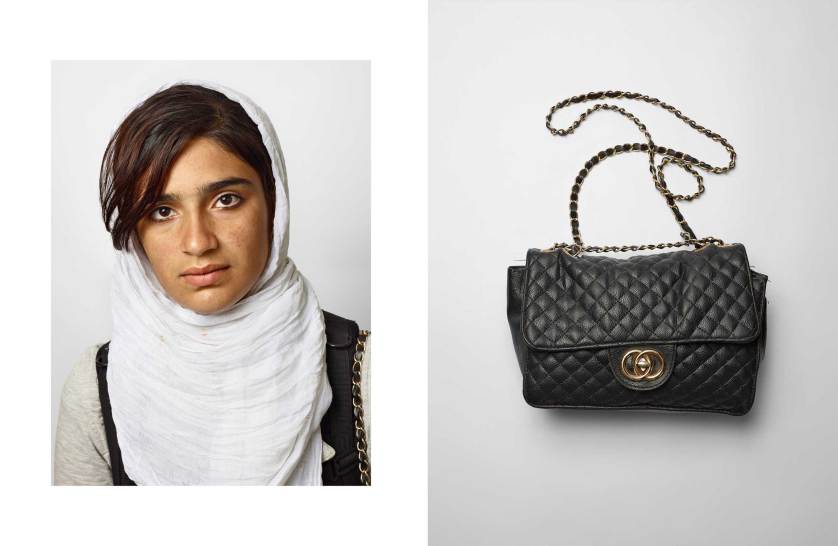

Parisa, 15, from Afghanistan; “We’ve been traveling for two months. We’re going to Sweden—I don’t know where. I got this bag six months ago. I keep our papers that the smugglers needed to get us past the borders.” Published Oct 9, 2015. photo: James Mollison for TIME
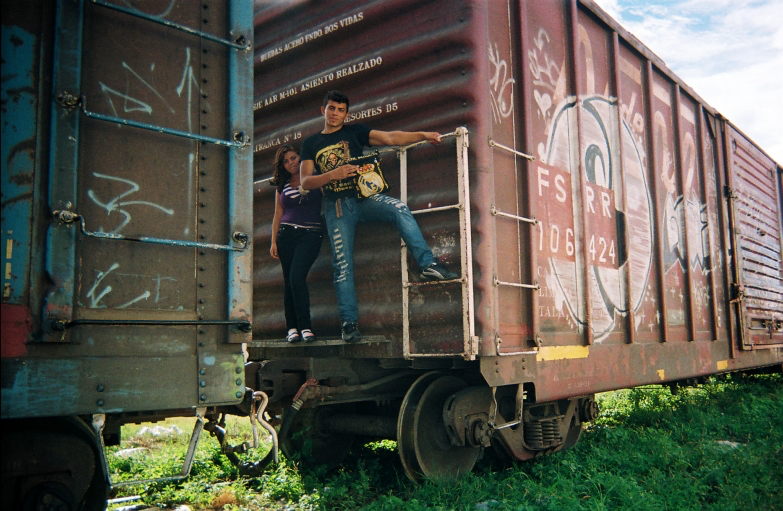

“This photo was taken by a volunteer at a church-run migrants shelter,” says Pindado. “We don’t know much about the two people in this photo, whether they are a couple or not. It’s true, though, that if you’re a migrant women traveling alone through Mexico, it’s a good idea to find a companion along the way. Many women get raped.” Published June 2014. photo: MigraZoom participant
Follow us on Instagram (@readingthepictures) and Twitter (@readingthepix), and subscribe to our newsletter.
Topic
A curated collection of pieces related to our most-popular subject matter.
Panelists
Photographer, Writer, Lawyer, Associate Professor Photography The New School Parsons
Photographer and Author, NOOR
Freelance Photographer
Associate Professor of Media and Communications London School of Economics and Political Science
Founder, Social Documentary Network
Publisher, Reading the Pictures
(Salon Moderator) Writer, photography historian, Associate Professor of Communication, University of Illinois
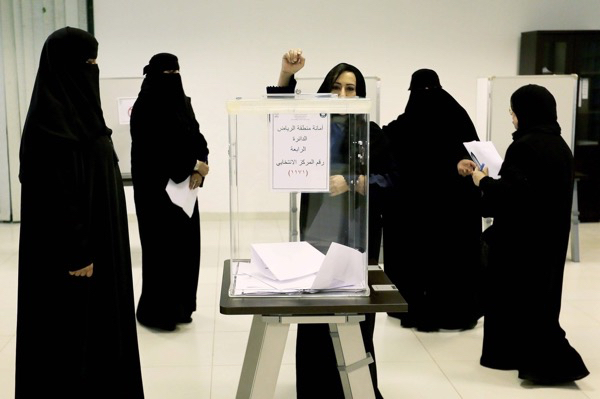

Reactions
Comments Powered by Disqus